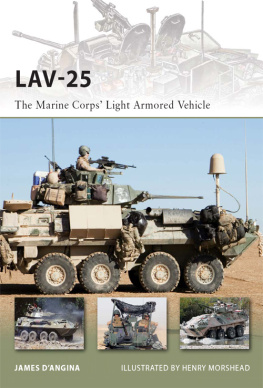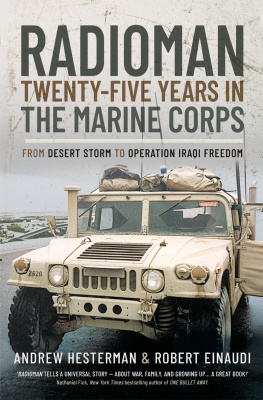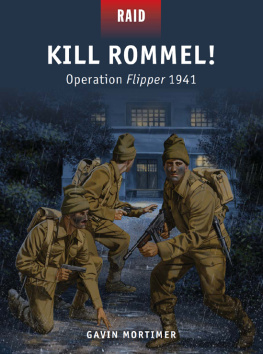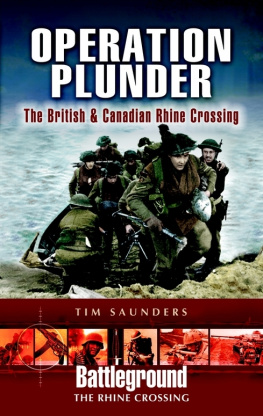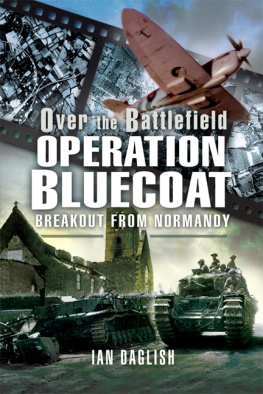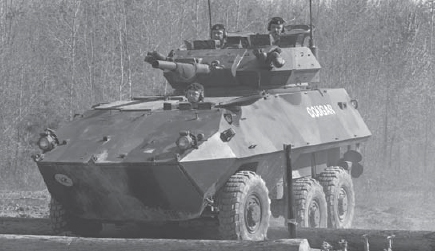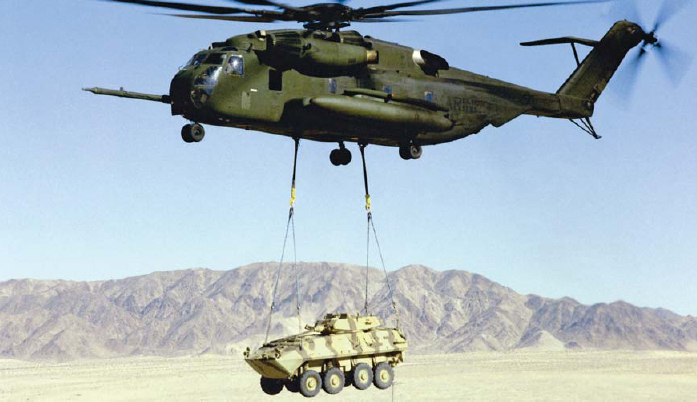NEW VANGUARD 185
LAV-25
The Marine Corps Light Armored Vehicle
JAMES DANGINA ILLUSTRATED BY HENRY MORSHEAD
CONTENTS
LAV-25
THE MARINE CORPS LIGHT ARMORED VEHICLE
ORIGINS AND DEVELOPMENT
The United States Light Armored Vehicle (LAV) Program began during the late 1970s. In response to escalating tensions in the Middle East, the Carter administration created the Rapid Deployment Force (RDF), following which a Rapid Deployment Task Force (RDTF) was formed. The RDTF established a requirement for an LAV to be used by rapid-deployment oriented units within the Department of Defense (DoD). In early 1980, the Senate Armed Services Committee approached the US Army and US Marine Corps about acquiring an off the shelf LAV. Both Army and Marine Corps leadership showed interest, and in April of 1981 proposal submissions were opened to 20 companies.
Three companies were selected for the final evaluation: Alvis Ltd of England, Cadillac Gage USA, and the Diesel Division of General Motors of Canada. Each company was required to provide three test vehicles, two utilizing the M242 Bushmaster 25mm chain gun and a single test bed incorporating a 90mm Cockerill cannon. Alvis Ltd submitted a Cockerill cannon mounted on the Scorpion 90 and three Stormer armored personnel carriers (APCs) armed with the M242 Bushmaster. The US Cadillac Gage company submitted two separate entries, the V-300 a new design utilizing a 6x6 wheeled configuration as well as a second entry based on a stretched V-150 Commando (re-designated V-150S). The only 8x8 configuration submitted was built by General Motors of Canada; the entry was based on the Swiss Motorwagenfabrik AG (MOWAG) Piranha series of vehicles. The Canadian company had been manufacturing 6x6 versions of the Swiss Piranha under license since 1977. The Marine Corps leased six of these vehicles (Cougars and Grizzlies) from the Canadian Army and borrowed an M113 APC from the US Army for a Field Analysis Concepts Test (FACT) in 1979 to study weapon system tactics.
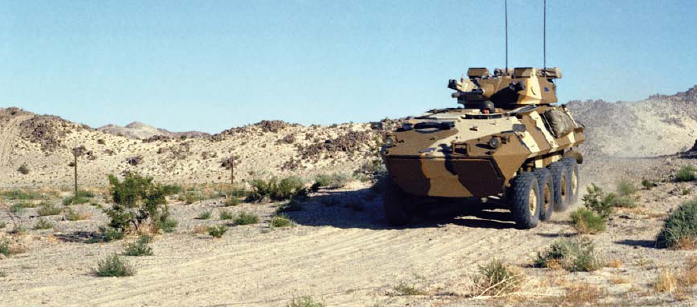
An LAV-25 wearing a distinctive four-pattern desert camouflage scheme moves down a road along the Delta area of the Marine Corps Air-Ground Combat Center, Twentynine Palms, 1982. (DoD)
A Canadian Cougar based on the six-wheeled version of the Swiss MOWAG Piranha demonstrates the ability to overcome obstacles during an exhibition for Marine Corps officials at Quantico, VA, May 1979. (DoD)
Testing of the LAV candidates took place at Twentynine Palms, California, and Yuma, Arizona. The commander of the US Army Tank-Automotive Command, Major General O.C. Decker Jr., oversaw procurement for both services and was the source selection authority. The Armys decision was then referred to the Marine Corps Systems Review Council (MSARC) headed by the Assistant Commandant of the Marine Corps for his decision. The Army expected to procure more than 2,350 vehicles, while the Marine Corps aimed to buy 744 examples of the winning vehicle.
In September 1982, one year after the final candidates were selected, a winner was chosen the General Motors of Canada (later General Dynamics Land Systems) 8x8 vehicle. The Army had two variants scheduled before substituting the High-Mobility Multipurpose Wheeled Vehicle (HMMWV; Humvee) for one of their LAV programs. The Army designated their version of the LAV as the M1047. The vehicle was similar to what the Marine Corps designated the LAV-25, but was not intended to carry dismounted troops. Instead the troop compartment was designed for additional ammunition and stowage. The US Army withdrew from the program completely due to funding problems. The Marine Corps, however, continued and eventually obtained funding to procure six variants: LAV-25 purposed for the 25mm Bushmaster; LAV-AT (Antitank); LAV-L (Logistics); LAV-R (Recovery); LAV-M (Mortar); and LAV-C2 (Command & Control). The vehicles were purchased within Fiscal Years 198285, and at the end of the program 758 LAVs had been built for the Corps, 14 more than originally planned.
Changes within the Corps
The new LAVs brought both doctrine and organizational challenges to the Marine Corps. The LAV was not replacing a current weapon system within an existing force structure all of the organizations and doctrine needed creating from scratch. Delays in the Air Defense variant and later the cancellation of the Assault Gun variant forced the Marine Corps continually to modify the organizational structure of their battalions.
A Marine Corps Sikorsky CH-53E Super Stallion transports an LAV-25 as an external load from an expeditionary airfield to the Lavic Lake training area, Twentynine Palms, December 1982. One of the Marine Corps requirements for the LAV was that it weighs less than 16 tons in order for the vehicle to be externally lifted by helicopter. (DoD)
Inherent with the force structure changes came organizational name changes. Initially the battalions were called LAV battalions (LAVBs). In October 1988, the designation changed to Light Armored Infantry (LAI) battalions. Finally, in 1994, the name changed once more to Light Armored Reconnaissance (LAR) battalions, better reflecting the mission of the units.
The Infantry Training School (ITS) at Camp Pendleton, California, was given the mission to establish an LAV school in 1982. ITS was responsible for the training of all LAV crewmen under the new 0313 Military Occupational Specialty (MOS). The classes grew from a basic LAV Crewman course, to adding the Staff Non-Commissioned Officer & Officer Course in 1994. The same year the school would establish itself as a training company. In 2003 the LAV Training Company became an independent formal school under the School of Infantry. Curricula included an entry-level LAV Crewman Course, a Leaders Course and an Evaluator Course.
Company A (Reinforced) received the Marine Corps first LAVs. The company was activated at Twentynine Palms on July 11, 1983, and started receiving the first of their vehicles in April 1984. With ten officers and 250 enlisted personnel, Company A was considerably larger than what was planned for future LAV companies. The Marine Corps would eventually activate a total of four LAV battalions. The first was 2nd LAV Battalion activated in May 1985 at Camp Lejeune, North Carolina. This was followed by the 1st LAV Battalion, Camp Pendleton, and later Company A (Reinforced) evolved into the 3rd LAV Battalion still stationed at Twentynine Palms. On September 23, 1987, the 4th LAV Battalion was activated as a reserve battalion at Camp Pendleton.
 | LAV-25 ON EXERCISE, 1987
A Marine LAV-25 seen during Joint Exercise Cold Winter 87, a NATO exercise, February 1, 1987. The turret is turned 180 degrees to face the aft end of the vehicle, and the M242 Bushmaster 25mm chain gun still has its protective cover placed over the barrel. The crew have added snow chains and a temporary coat of white paint to the NATO three-color camouflage scheme to better adapt the vehicle to its extreme environment. The vehicle displays the name HI-BODY on the right side of the turret. Cold weather gear, sleeping bags, rolled bed mats (known as ISO mats in the Marine Corps), and a shovel are stowed on top of the small bustle rack. |

